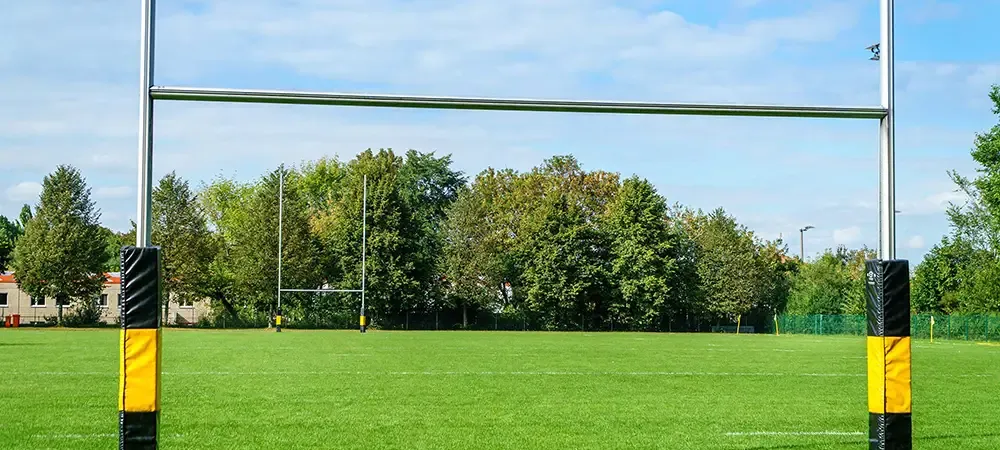Top 5 Signs It’s Time to Renovate Your Athletic Field

Rescheduling games. Soggy sidelines. Turf damage that won’t bounce back.
For athletic directors and facility managers, these issues are more than seasonal annoyances—they’re red flags that your field is due for serious attention. If your sports field renovation has been on the back burner, now is the time to take action.
In this guide, we highlight five key warning signs that it's time for an athletic field renovation—and how RZ Sports Turf can help restore safety, performance, and consistency to your turf.
1. Water Pools on Your Field? Drainage Might Be the Problem
If your field floods every time it rains, it’s not just an inconvenience—it’s a sign that your field drainage system isn’t doing its job.
Why it matters:
Poor drainage leads to standing water, turf suffocation, root damage, and most critically, game delays and cancellations. Athletic directors know this pain all too well—especially during spring and fall sports seasons (March–May and September–November) when rainfall is frequent, and schedules are tight.
Playing on saturated turf isn’t just a bad idea—it causes serious damage to the rootzone, often requiring costly repairs.
The root cause?
Most often it’s a combination of:
- Poor infiltration capacity in native soils (like Midwest clays)
- Inadequate surface grading
- Lack of a subsurface drainage system
A well-designed drainage system isn’t a luxury—it’s essential for ensuring safe, playable conditions through wet weather.
How RZ Sports Turf Fixes Drainage Problems
RZ Sports Turf specializes in comprehensive drainage solutions designed for real Midwest field conditions. Our services include:
- Trenching and grading to correct undulations and ensure water flows away from play areas
- Subsurface drainage system installation to remove excess water from deep within the soil profile
- Surface slope corrections using laser-guided grading for precise water movement
We design each system to match your field’s specific soil and usage patterns—so rainouts become a thing of the past.
Easy Ways to Spot Drainage Issues
Even without a soil probe, you can identify poor drainage by watching for:
- Puddles or soggy areas that don’t dry quickly
- Turf that pulls up easily, indicating root rot
- Game delays after light rainfall
- Visible “channels” or ruts from water runoff
2. Uneven Ground and Hard Soil Can Cause Injuries
If your athletes are slipping, tripping, or complaining about “rock-hard” ground, it’s time to evaluate the surface safety of your field.
Why it matters:
Compacted soil and irregular grading are two of the leading contributors to on-field injuries. They affect player footing, cause awkward ball movement, and force athletes to compensate their form—raising injury risks.
What Is Laser Grading and Why It Helps
Laser grading uses advanced machinery and sensors to reshape your field to precise elevations and slopes—down to fractions of an inch.
Benefits include:
- A smoother, even playing surface
- Improved drainage performance
- Enhanced ball roll and bounce consistency
This process is particularly vital for fields with a traditional crown or single-plane slope, helping water move efficiently while creating a safer environment.
Why Soil Compaction Is Bad for Turf and Players
Compacted soil:
- Prevents roots from expanding
- Reduces water and nutrient uptake
- Creates hard, unforgiving surfaces that increase impact injuries
While aeration helps temporarily, long-term compaction issues are best solved through a renovation that rebuilds soil structure and re-establishes the right rootzone profile.
4. Bumpy Fields Make the Ball Bounce and Roll Wrong
Is the ball skidding, bouncing unpredictably, or rolling faster on one side of the field? That’s a sure sign of inconsistent grading or turf quality.
Why it matters:
Poorly maintained fields can ruin gameplay—especially in sports like soccer, lacrosse, and field hockey where surface consistency is crucial. Uneven patches can also create competitive disadvantages, frustrating athletes and coaches alike.
How Renovations Improve Game Play
Renovation smooths out surface inconsistencies by:
- Correcting slopes with laser grading
- Eliminating low or high spots through precision contouring
- Rebuilding turf with species that match your sport’s performance needs
Consistent bounce, roll, and traction turn a frustrating field into a pro-level surface that teams can trust.
5. Spending Too Much on Repairs? It Might Be Time to Renovate
If you’re pouring money into patch jobs, fertilizers, and emergency fixes—but your field still underperforms—it’s time to stop reacting and start rebuilding.
Why it matters:
Field maintenance has diminishing returns when your rootzone, drainage, or turf health is fundamentally compromised. Renovation is an upfront investment that pays off over time.
Renovations Can Save You Money and Time
Here’s how a smart renovation saves you long-term:
- Fewer rainouts mean more game revenue and less rescheduling stress
- Lower irrigation, labor, and chemical usage
- Reduced injury liability from uneven or unsafe surfaces
- Longer field lifespan between major repairs
Work with RZ Sports Turf for Lasting Solutions
With 37 years of experience, we don’t apply quick fixes—we build high-performance fields that last. Our team works with you to develop a renovation plan that fits your usage, climate, and budget.
How Often Should You Renovate Your Athletic Field?
While every field is different, most natural turf athletic fields require renovation every 5 to 10 years. Frequency depends on:
- Level of use (single sport vs. multi-sport facility)
- Climate and drainage challenges
- Quality of original field construction
If your school plays during wetter months (spring and fall), your field is at greater risk of damage from rainfall and overuse, which may shorten renovation intervals.
Don’t wait for crisis-level damage. Proactive planning avoids forced closures and costly emergency work.
Schedule a free field evaluation with RZ Sports Turf—contact our team today!